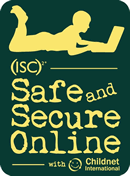 By Blair Campbell
By Blair Campbell
If you are concerned that your child is at risk for being a victim of cyberbullying, you can take proactive steps and intervene before things get out of hand. The way you and your child respond may even help break the cycle of bullying in your community.
Prohibiting your kids from participating online is not a solution. It doesn’t work—they’ll just find a way to do it out of your presence and will not feel comfortable communicating with or confiding in you if they run into a problem. Rather, you need to strike a balance between policing their activity and offering them constructive guidance. Here are some positive ways you can talk to your kids about and work with them to prevent cyberbullying:
- Ask your kids about what they do online and try to understand their motivations. Ask them:
- Why do you [chat, post on Facebook, play games, tweet]?
- What enjoyment do you get out of it?
- How does it make you feel?
- How would you feel if you couldn’t do it anymore?
- Have a degree of levity when you talk to them, and be genuine. Kids may think you don’t get it, and you may not, but you’ve got to let them know you’re willing to listen.
- Train them to control their online image rather than letting other people dictate who they are online. If they lose control of their image/reputation, it’s almost impossible to get it back.
- Remember: Any kid can make bad decisions, so you need to arm your kids with the ability to recognize where they should stop risky or bullying behavior. If something doesn’t feel okay, they should stop—before they make choices they can’t undo.
- Remind your kids that just because people can get away with cyberbullying, that doesn’t mean they should. Just as you would in any situation, remind them that they can do whatever they want online, but there are potential consequences for their choices. Not In Our Town does great job of portraying a real bullying scenario.
- Remind your kids that when they engage with a bully, they feed the beast. Advise your kids to ignore bullying behavior and remind them that there are many constructive, effective ways to put a stop to it. The National Crime Prevention Council has some great ideas for teens.
- If your child discloses to you that they’ve been bullied, try to neutralize the situation. Also, collect evidence of the behavior, including screenshots, text messages, computer logs, internet history, etc. This will be useful when authorities investigate. Then, contact your local law enforcement agency. Go to www.bullypolice.org to educate yourself on the cyberbullying laws in your state.
- Recognize that if your child feels abused, whether it’s on or offline, the emotions are equally valid, and they are real.
To request a Safe and Secure Online presentation delivered by information security experts for free at your child’s school, parent or teacher group, fill out this form: https://cyberexchange.isc2.org/safe-secure.aspx.
For additional help, I recommend these resources:
- The National Crime Prevention Association has some great tips and handouts to help you get a better handle on what your kids are doing online and to stay engaged in the issues.
- Stopbullying.gov offers information and tools for the entire community.
- The Cyberbullying Research Center provides up-to-date information on cyberbullying laws and trends.
 Remember that your best weapons are your own experiences. Cyberbullying is just plain old bullying with different ammunition. It may be harder to identify the bully because they can hide behind a device temporarily, but there are laws to protect kids, and kids that bully can be tracked down and held accountable and learn to transform their behavior from negative to positive.
Remember that your best weapons are your own experiences. Cyberbullying is just plain old bullying with different ammunition. It may be harder to identify the bully because they can hide behind a device temporarily, but there are laws to protect kids, and kids that bully can be tracked down and held accountable and learn to transform their behavior from negative to positive.
Miss Part 1 in this series? Find it here.
Blair Campbell is a privacy professional with 15 years of experience in information security who holds information security, audit and privacy certifications. He is also responsible for the introduction of (ISC)2’s Safe and Secure Online program in Canada. Since the launch of the program there in 2011, local volunteers have helped thousands of children learn to make positive decisions online.